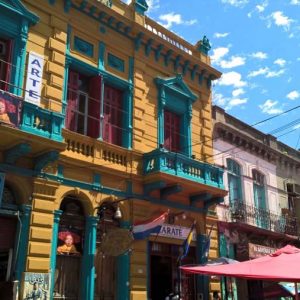Secluded in his shabby Paris lodgings at No 22 rue de Rivoli, overlooking a claustrophobic inside courtyard, Alexandre Dumas wrote The Count of Monte Cristo and The Three Musketeers in the space of seven months in 1844. So dedicated was he to his task, that one afternoon he completed the last fifteen pages of Monte Cristo but when many authors would have gone out to celebrate, Dumas simply finished his daily quota by remaining at his desk and writing the opening five pages of the Musketeers. The books inspired a prolific industry of films about Dumas’s characters, more than sixty movies in the past century. But while the Count of Monte Cristo never lived, d’Artagnan, Athos, Aramis and Porthos were all very much flesh and blood, and left their mark in towns and villages in what is often inaccurately referred to as Gascony, an indeterminate part of France south and east of Bordeaux.
The Musketeers’ captain, Tréville, was also real: like the Three Musketeers, he was a Béarnais, not just a delicious sauce bearing that name but once an independent country south of Gascony and just north of the Pyrénées. When Henry IV, himself a Béarnais, became king of France in 1589, the impoverished little kingdom began to prosper. Its merchant class bought their way into the cash-strapped French nobility, among them Tréville’s father, Jean-Armand de Peyrer, who came from Oloron, situated high on a bluff overlooking the confluence of the rivers Ossau and Aspe. In 1607 he became seigneur of Trois-Villes, west of Oloron, although the grand-sounding three towns were in fact three tiny villages cheek by jowl. It was Peyrer’s son, Tréville, who made his name by some prodigious feats of bravery in the French army and was appointed Captain of the King’s Musketeers. Tréville’s exquisite château at Trois-Villes can be visited, but his full-length portrait, the work of the famous Court painters, the Le Nain brothers, which once hung in the drawing-room, has been sold to a private collector and has vanished without trace.
At Saucède, north-west of Oloron, the water mill still survives where the Peyrer family first sold their corn in less prosperous times. At Pau, opposite the château, stands the hôtel Peyré, an imposing building the Peyrers put up in their heyday. Once capital of independent Béarn, Pau was the birthplace of Porthos in 1617. His father, Isaac de Portau, proved a man of substance, the senior legal officer in the provincial parliament, its notary-general. He purchased the hamlet of Porteu, upstream on the River Vert and lying in the shadow of the Pyrénées; it has long since disappeared, after giving Porthos his name. However, the house where Porthos is believed to have grown up, complete with a fairy-tale tower, survives in the village of Ogenne-Camptort, north of Saucède.
Tréville’s mother, Marie d’Aramitz, was the second of three children of Pierre d’Aramitz, a Hugenot army captain and noted swashbuckler. Pierre had acquired, in murky circumstances, the château of Labadie, near the village of Aramits, south-west of Oloron, also on the river Vert. His son Charles, Marie’s brother, became abbé laïque of Aramits, when it was no longer an ecclesiastic manor but still supplied a title on the bottom rung of the French nobility. Charles married a local beauty, Catherine de Rague and their son, Henri d’Aramitz, became Aramis the Musketeer. The abbey, alas, was pulled down in 1980 after a disastrous fire and all that remains of Aramis’s home is its grandiose stone gateway.
Soon after his marriage to Marie d’Aramitz in October 1597, Jean du Peyrer employed his pretty niece, Nicole du Peyrer, in his business. Nicole caught the eye of the wealthy Adrien de Sillègue, whose family owned the village of Athos, north-west of Oloron. Their younger son, called Armand, became Athos the Musketeer. Athos, too, once had its château, but it has long since been demolished and the empty space is usually occupied by a herd of languid-looking cows.
Tréville and Aramis were first cousins, while Athos was Tréville’s first cousin once removed. Porthos had family connections with Aramis, another of whose first cousins, Gédéon de Rague, was married to Anne d’Arracq, Porthos’s second cousin. The future Musketeers all moved in the same circle of bourgeoisie and would have long vanished into obscurity had not Tréville, knowing of their skills as duellists, summoned them to Paris in 1640. Like gunslingers in the old west, they were brought in to settle a turf war – in this case, against the guards of French prime minister, Cardinal Richelieu. And entirely by coincidence, who should arrive in Paris just before their multiple duel and share in their triumph but the seventeen-year-old Charles de Batz, better known as d’Artagnan.
Like Tréville, d’Artagnan was descended from an unpretentious bourgeois family, ennobled through the purchase of land and titles; but he was from Gascony, not Béarn. His great-uncle, Arnaud de Batz, bought the family home of Château Castelmore, near Lupiac, in the mid-sixteenth century. It is now owned by a regional French politican, who does not welcome visitors; but the outside is worth seeing, together with the plaque announcing this to be d’Artagnan’s birthplace. Charles de Batz was the youngest son of Françoise Montesquiou- Artagnan, from one of the noblest families in France, and borrowed part of her name although he was not entitled to do so.
Athos was killed in a duel in Paris in 1643 and soon afterwards the Musketeers were disbanded. D’Artagnan entered the service of Richelieu’s successor, Cardinal Mazarin, and under Louis XIV would become Captain of the reformed Musketeers.
Aramis and Porthos returned to their native Béarn. In February 1650 Aramis married a local young heiress, Jeanne de Béarn-Bonasse, at Oloron. Jeanne duly gave birth to two sons and a daughter, but Aramis was not cut out for domesticity. Even though his wife was expecting their fourth child, in 1654 Aramis decided to return to Paris to rejoin d’Artagnan. However, he was suddenly taken ill. A notary was summoned urgently to his house in Aramits, where the second of the Three Musketeers died shortly after dictating his will.
The third and last of the trio, Porthos, fell on hard times and took on the dangerous role in charge of munitions at the local fortress of Navarrenx. It lies east of Ogenne-Camptort, dominating the Gave d’Oloron, and has many interesting old cannons. In 1658, through Tréville’s persistence, Porthos was given the seigneurie of Lanne-de-Barétous, south-west of Oloron, as a reward for services rendered. The little manor’s tax-free income was sufficient for Porthos, aged forty-one, to propose marriage to a much younger woman. He lived to be ninety-five, an exceptional age for the time, expiring at Pau from an apoplectic stroke in 1712. But then no-one would have expected Porthos of all people to die quietly in his bed.
Roger Macdonald is the author of two history books about the fate of the Musketeers: The Man in the Iron Mask and The Queen’s Diamonds.











